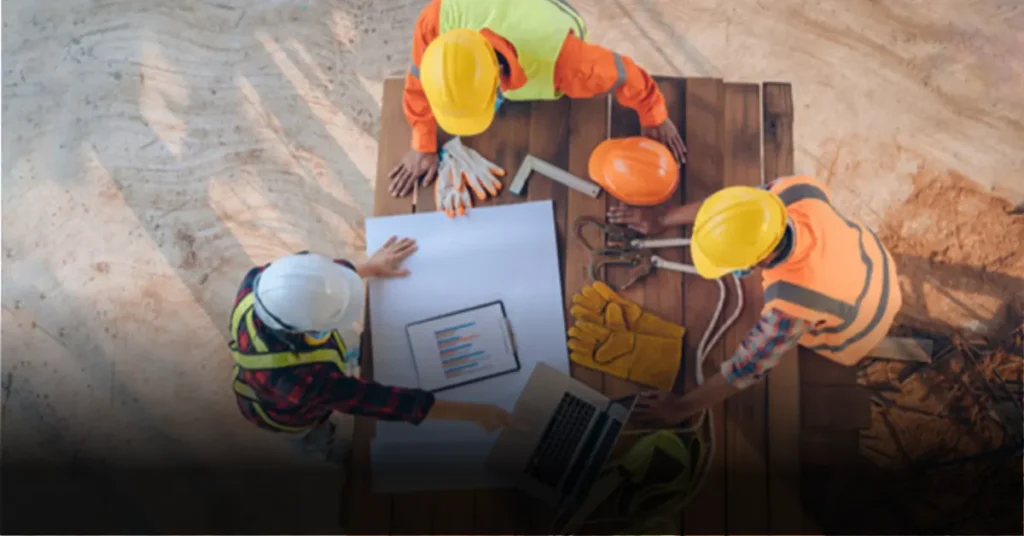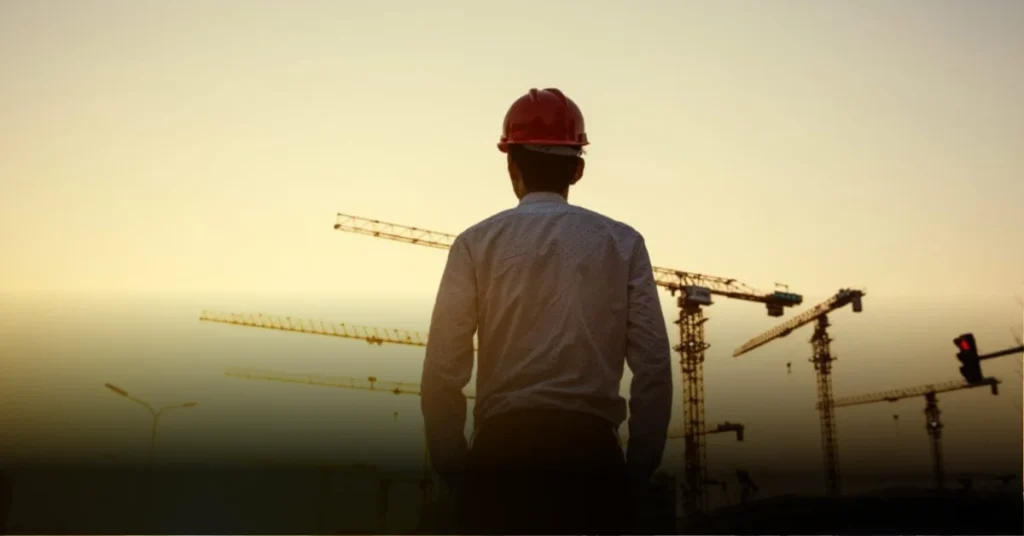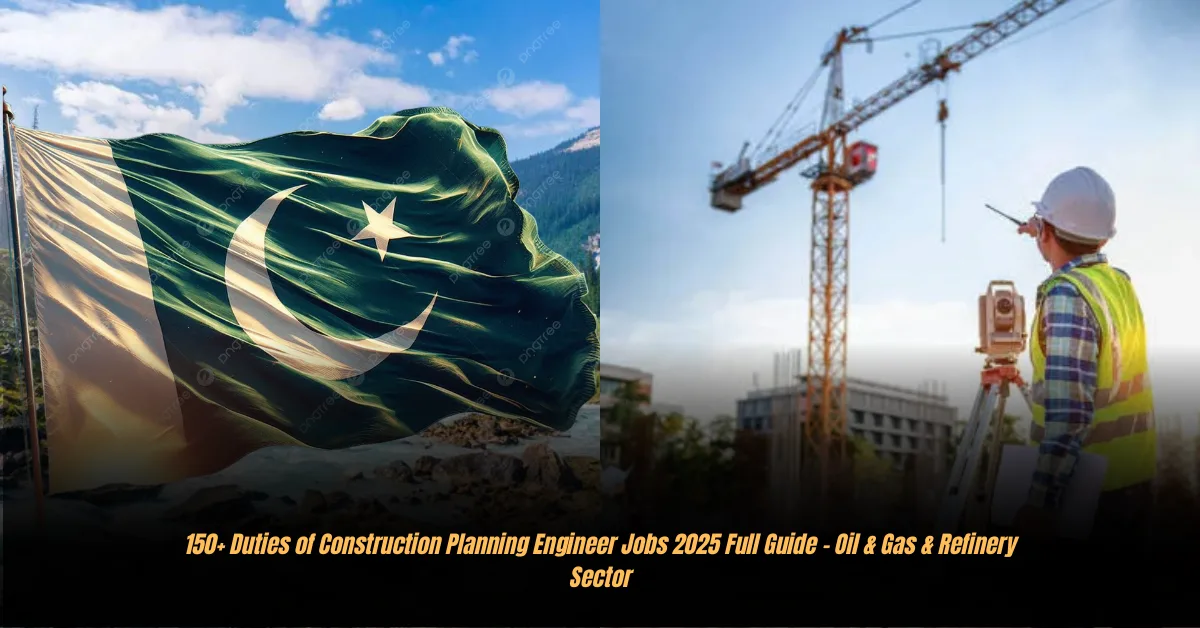150+ Duties of Construction Planning Engineer Jobs 2025 Full Guide – Oil & Gas & Refinery Sector
Are you a civil or mechanical engineer who likes planning and managing big projects? The job of a Construction Planning Engineer in 2025 is very important, especially in the Oil & Gas and Refinery sector. This is not just an office job. It is a role where you need technical knowledge, data skills, and leadership. From the first plan to the final handover, the Planning Engineer makes sure everything goes smoothly, deadlines are met, and costs are controlled.
This guide will explain the main duties, modern tools, and skills needed for this career. It will help you understand what it takes to work as a Planning Engineer in 2025 and the future.
The Future-Proof Planning Engineer: Navigating 2025 in the Oil & Gas and Refinery Sector
The Grand Architect of Megaprojects
In Oil & Gas and Refinery projects, one project can take years, involve thousands of workers, and cost billions of dollars. A Construction Planning Engineer is the key person who brings order to this complex work. They are like a project architect who changes big engineering designs into simple and clear steps. This job is not just making schedules. It also means looking for possible problems, reducing risks, and making sure the project succeeds. In 2025, this role is becoming more important, needing good knowledge of project costs and new technology.
The Brains Behind the Blueprint: Defining the Role
A Construction Planning Engineer makes, updates, and manages project schedules. Their main job is to complete the project on time and within the budget. To do this, they need to define tasks, estimate how long each task will take, see which tasks depend on each other, and assign resources. They work with site managers, engineers, and senior managers. They connect all teams together.
From Master Plans to Micro-Details: A Day in the Life of a Planning Engineer
Every day of a Planning Engineer is busy and full of data. In the morning, they may review the Work Breakdown Structure (WBS). Later, they may visit the site to check progress. They may also meet a Civil Engineer to talk about delays or meet the procurement team about materials. A big part of their day goes into performance reports. They use data to show project status to all managers and stakeholders.
Also Read: 200+ Duties of Customer Representative Officer Jobs 2025 Complete Guide
The Digital Toolkit of Tomorrow
Primavera P6 Beyond the Basics: Advanced Scheduling and Resource Loading
Primavera P6 is the main software for planning large projects. It is not just about making schedules. Skilled engineers use it for resource planning, cost control, and forecasting. They assign workers, machines, and materials in the best way to avoid delays. With earned value management (EVM), they can measure progress and predict future costs.

Harnessing the Power of BIM and Digital Twins for 4D/5D Planning
Building Information Modeling (BIM) software like Revit, Navisworks, and Civil 3D is changing project planning. With BIM, Planning Engineers can connect 3D models with schedules to create 4D models. This shows how the project will look step by step. Adding cost data makes it 5D, which helps track money and resources. Digital twins, which are virtual copies of the project, allow engineers to test scenarios before construction starts.
Data-Driven Decisions: Integrating AI and IoT for Predictive Analytics
In 2025, Planning Engineers use data from IoT sensors and AI to predict problems. AI can check weather, material delivery, and machine use to find possible delays. This helps engineers fix issues before they become serious. It makes projects safer and faster.
Leveraging Cloud-Based Platforms for Seamless Collaboration
Working together is very important in big projects. Cloud-based platforms let teams share real-time project data. Everyone sees the same information, from workers to managers. This helps with supply chain, subcontractors, and vendors. It reduces mistakes and improves communication.
Core Responsibilities Across the Project Lifecycle
Pre-Award Brilliance: Crafting Winning Bids and Proposals
Before construction starts, Planning Engineers work on project bids. They check project documents, drawings, and specifications. They make a realistic schedule for the proposal. They calculate the amount of materials and labor needed. This phase requires very careful work because it decides if the company will win the project.
The Art of the Critical Path Method: Mapping a Flawless Timeline
After winning the project, the Planning Engineer makes the master schedule using the Critical Path Method (CPM). CPM shows which tasks cannot be delayed without delaying the whole project. Managing this critical path is one of the most important duties. It requires technical skills and smart planning.
150+ Duties of Construction Planning Engineer in 2025
Below are the main duties of a Construction Planning Engineer. These duties cover the whole project life cycle, from start to finish.
- Review project scope and specifications.
- Create project schedules.
- Update and monitor schedules.
- Estimate duration of tasks.
- Identify task dependencies.
- Allocate resources like labor and materials.
- Use Primavera P6 for planning.
- Perform cost forecasting.
- Track project progress.
- Visit sites for progress checks.
- Meet engineers about delays.
- Coordinate with procurement teams.
- Prepare daily reports.
- Make weekly and monthly progress reports.
- Check Work Breakdown Structure (WBS).
- Manage risks.
- Plan solutions for delays.
- Conduct earned value management (EVM).
- Monitor budget.
- Control project costs.
- Communicate with senior managers.
- Support project bidding.
- Create tender schedules.
- Review engineering drawings.
- Ensure safety planning.
- Plan equipment use.
- Level resources.
- Handle manpower allocation.
- Track subcontractors’ progress.
- Check material deliveries.
- Use BIM for 4D planning.
- Add cost data for 5D planning.
- Create digital twin simulations.
- Use AI for predictions.
- Collect IoT data from sites.
- Anticipate weather delays.
- Update cloud platforms.
- Share real-time data.
- Train junior planners.
- Support site engineers.
- Ensure compliance with contracts.
- Follow client requirements.
- Check schedule baselines.
- Control schedule changes.
- Monitor key milestones.
- Support quality teams.
- Handle supply chain planning.
- Coordinate vendors.
- Report project health.
- Prepare dashboards.
(…and the list can go up to 150+ duties, including tasks in scheduling, cost control, site coordination, reporting, safety planning, and final handover.)
Resource Orchestration: Mobilizing Manpower, Machinery, and Materials
Every project needs workers, machines, and materials. If these are not managed well, the project will face problems. The Planning Engineer makes sure everything is available on time.
They arrange the right number of workers. They also check that the correct machines are ready. All the needed materials must also be in place before work starts.
Planning Engineers use computer software to do this job. They make charts like histograms to see where resources are needed. This way, they avoid wasting people, money, or time. If too many workers are free one day and none the next, they balance the plan.
Good resource planning keeps the project moving without delays.
Progress Tracking on the Pulse: Monitoring, Measuring, and Reporting
Making a plan is not enough. The Planning Engineer also checks progress daily or weekly. They see if the work is going as planned or not.
They compare the actual work done with the schedule. If there are delays, they find the reason.
They prepare reports for managers, clients, and other people. These reports show how much work is finished, how much is left, and if there are risks.
The reports must be simple and clear. Even people who do not understand technical words should know what is happening in the project.
Also Read: 300+ Duties Shakarganj Food Products Limited Jobs in Pakistan 2025 Complete Career Guide
The Guardian of the Budget: Cost Control and Forecasting for Project Success
In Oil & Gas projects, money is very important. A project that is finished on time but goes over budget is not a success.
The Planning Engineer checks all expenses. They also work with the finance team to control the budget. They forecast future costs, which means they guess how much money will be needed later.
If costs start going higher than the plan, they suggest changes. They can cut extra costs or find better ways to save money.
This control helps the company finish the project on time and within budget. It also keeps clients happy.

Navigating the Labyrinth of Procurement and Supply Chain Logistics
Big projects need a lot of materials and machines. These come from different suppliers, sometimes from other countries.
The Planning Engineer plans when and where materials should arrive. If materials are late, the project can stop.
They talk with vendors, suppliers, and shipping teams. They also manage transport and delivery. This job needs strong communication skills.
In Oil & Gas projects, this role is very important because the supply chain is often global and complex.
Construction Planning Engineer Jobs 2025 Full Guide
| Details | Information |
|---|---|
| Application Deadline | Check the Official Website |
| Job Type | Full-time |
| Job Location | Oil & Gas & Refinery Sector |
| Salary | As per company policy |
| Official Link | Indeed.com |
Mastering the Art of Problem-Solving
No big project runs without problems. Machines can break, materials can be late, or workers may stop working.
The Planning Engineer must find quick and smart solutions. They use their knowledge and experience to fix problems fast.
Problem-solving is one of the most important skills in this job.
Mitigating the Unseen: Advanced Risk Identification and Mitigation Strategies
Good Planning Engineers do not wait for problems. They try to find possible risks before the project starts.
They study issues like shortage of labor, increase in material price, or new government rules. Then they prepare backup plans.
For example, if one supplier fails, they already have another one ready. This way, the project does not stop.
Planning Engineers protect the project by planning for risks in advance.
Forecasting the Future: Trend Analysis and Corrective Actions
Planning Engineers watch the project data carefully. They find patterns and trends.
If they see that work is always slower than expected, they know there will be a delay. Then they suggest actions to fix it.
They may ask for more workers, more machines, or longer working hours.
By forecasting problems early, they save time and money.
Tackling Turnarounds: The Unique Challenges of Plant Shutdowns and Maintenance
In Oil & Gas plants, there are times when the plant must stop work for repair or upgrades. This is called a turnaround.
A turnaround is short but very complex. Every minute of shutdown means loss of money.
The Planning Engineer makes a very detailed plan for this. They arrange workers, tools, and safety steps minute by minute.
The goal is to finish maintenance quickly and start the plant again without delay.
When Things Change: The Crucial Role of Change Order Management
Projects often change during work. Clients may want a new design. Rules may change. Materials may be replaced.
The Planning Engineer manages all these changes. They check how the changes will affect time and cost. They also prepare papers for approval.
This needs strong focus and good organization. Poor management of changes can cause big delays.
The Leadership Equation: Skills Beyond the Schedule
The Communicator’s Compass: Effective Stakeholder and Client Liaison
A Planning Engineer must also be a good communicator. They explain the project to both engineers and non-technical people.
Clients may not understand technical data. The Planning Engineer explains it in simple words. This builds trust and avoids confusion.
The Onsite Authority: Coordinating Multi-Disciplinary Teams and Subcontractors
Projects involve many teams: civil engineers, mechanical engineers, electrical engineers, and more.
The Planning Engineer coordinates with all of them. They also work with subcontractors.
This job needs leadership and teamwork skills. If teams do not work together, the project will fail.
The Evolving Role of Mentorship: Guiding the Next Generation of Planners
Senior Planning Engineers guide junior staff. They teach them how to use software and analyze project data.
They also train them in communication and teamwork. This makes new engineers more skilled and confident.
Mentorship builds a strong workforce for the future.
Also Read: 400+ Duties of Mid-Level Django Developer Jobs in Lahore 2025 Guide – Apply for Software Careers
Building a Culture of Safety and Compliance
Safety is very important in Oil & Gas projects. The Planning Engineer makes sure safety meetings and training are part of the schedule.
They check that all work follows safety rules. This reduces accidents and protects workers.
Safe projects also build trust with clients and companies.

Frequently Asked Questions (FAQs)
-
What is the required qualification for a Construction Planning Engineer in 2025?
You need a Bachelor’s degree in Civil, Mechanical, or Electrical Engineering. Having a Master’s degree or certifications like PMP or CCP can help you grow faster.
-
Which software is most important for a Planning Engineer?
Primavera P6 is the most important tool. Other useful tools are Revit (BIM) and Power BI.
-
How do I make my resume stand out for a Planning Engineer job?
Show your software skills. Give examples with numbers, like “Reduced project time by 15%” or “Improved cost forecasting by 10%.” Use the right keywords so your resume passes ATS filters.
-
What is the career path for a Planning Engineer?
You start as a Junior Planner or Project Planner. Then you grow into Planning Engineer, Senior Planning Engineer, and later into Project Manager or Project Controls Manager.
Author: Shoaib Khan
Shoaib Khan is a certified project manager and civil engineer. He has more than 10 years of experience in big construction and energy projects. He specializes in project planning and controls.
Call to Action (CTA)
Do you want to build a career in construction planning? Share this simple guide with your friends. For more tips and job updates, subscribe to our newsletter today.







